Inside the little-known Monsanto campus where scientists are changing the way you eat
In 2016, Monsanto was named the fifth-most hated company in America.

But in Woodland, on a 212-acre campus surrounded by farms, Monsanto is focused on breeding vegetables the old fashioned way — no genetic modification required.
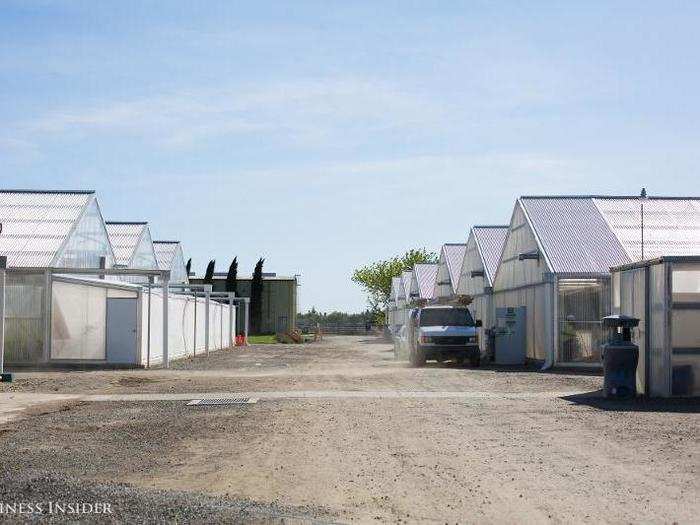
In 2005, Monsanto paid about $1 billion to acquire Seminis, a leading producer of fruit and vegetable seeds. Together, they formed the world's largest seed company.
"It was a natural evolution," says John Purcell, the global head of R&D for Monsanto's vegetables division.
Last year, Monsanto's vegetable seed business cleared $801 million in net sales — less than one-tenth of its revenue across GMOs, agrochemical products, and farming software solutions.
Though its vegetable division isn't as profitable as its two key GMO crops (pesticide-resistant corn and soybeans), the company invested $100 million into vegetable research and development in 2016, Purcell says. Monsanto spends about $1.5 billion a year on R&D in total.
Globally, Monsanto breeds 18 crops, including tomatoes, melons, onions, carrots, broccoli, and lettuce, and has over 2,000 varieties across its vegetable portfolio.
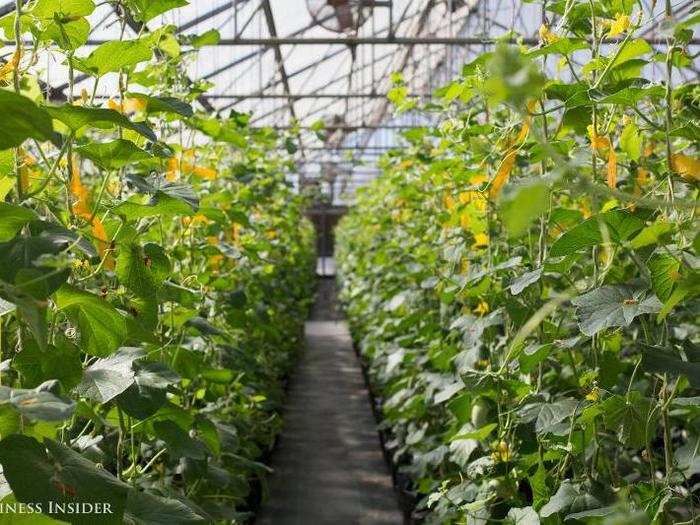
People who grow food have long manipulated their crops to get better results. In conventional breeding, farmers cross two parent plants with specific traits, in the hopes of those characteristics passing from parent to offspring through later generations.
Today, plant breeders still rely on classic methodologies to develop products that mature on time, last on shelves, look pretty, and taste good. But the process is time-consuming and costly, requiring farmers to plant multiple generations to achieve the desired effects.
Over the last 10 years, Monsanto has developed breeding technologies that allow scientists to know what characteristics plants have even before the seed is planted.
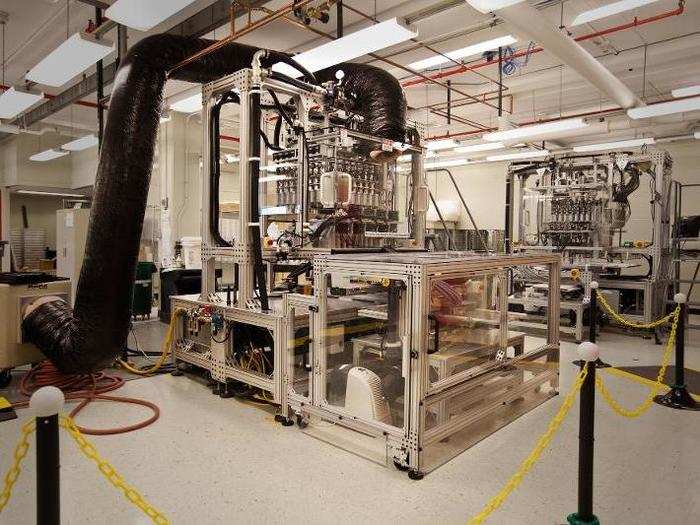
Much of that progress happens in Woodland. The facility brings together scientists, computer engineers, statisticians, and other talent to find new ways of growing produce.
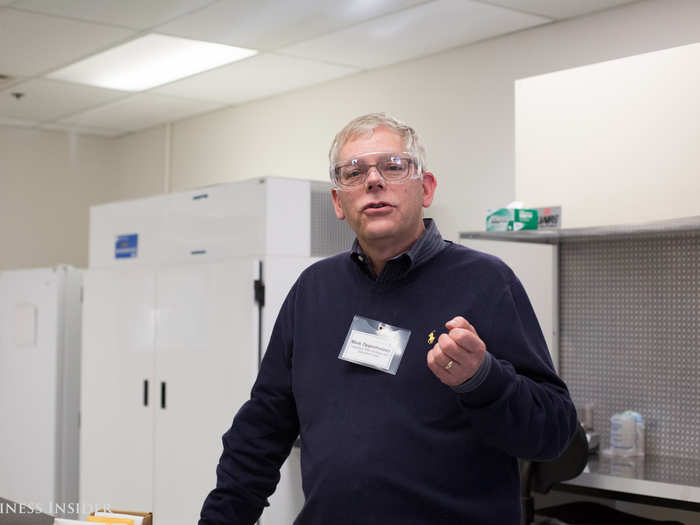
The campus is located less than a 30-minute drive from the state capital, but it might as well be a research facility on Mars. Rows of greenhouses stretch past endless dirt fields.
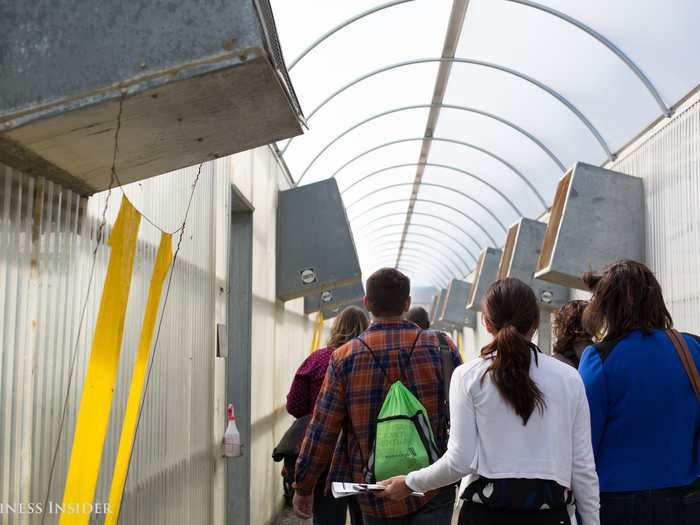
At Woodland, employees field support requests from farmers who buy Monsanto's seeds. "Just like humans, plants can also get sick," says Staci Rosenberger, who leads the plant pathology teams responsible for running diagnostic activities on vegetable crops.
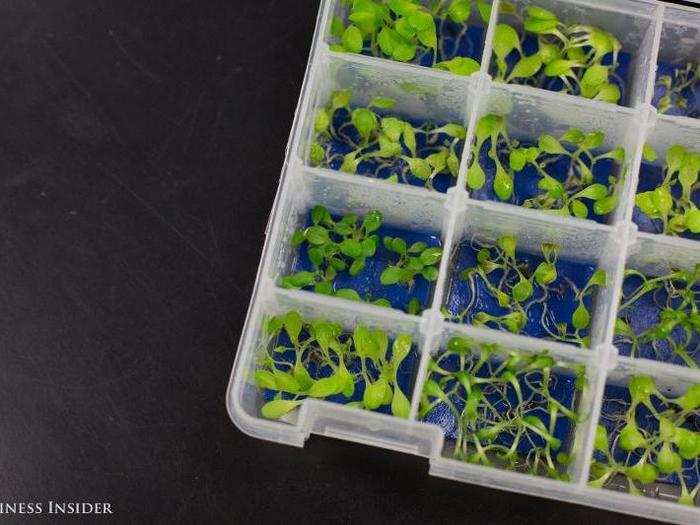
In a low-tech lab on campus, Rosenberger cracks open a plastic case of lettuce sprouts. Fuzzy white clusters dot the leaves — a symptom of a fungal disease called lettuce downy mildew.
The case is similar to ones her team receives when a customer's crops show signs of disease. They send samples to the lab at Woodland in the hopes of altering the crop for resistance.
When the samples arrive at Woodland, scientists first identify if it's a known disease or a new one causing the clusters. Then they turn to a database, called the gene bank, to find a variety of lettuce shown to be resistant to the disease plaguing the farmer's lettuce.

Hundreds of thousands of seeds are stored in one of several "seed libraries" on campus, which are staffed by two full-time librarians. They are organized by species.
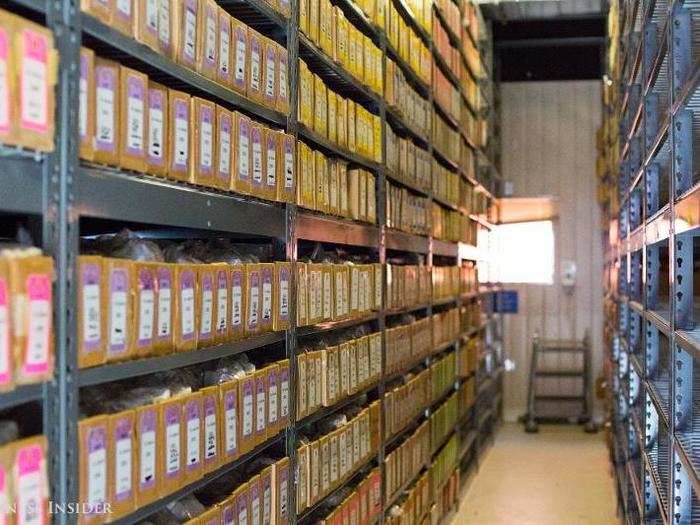
Rosenberger's team sends disease-resistant seeds to the farmer, who can breed them knowing that the pairing will be successful. "It's Match.com for lettuce," Purcell says.
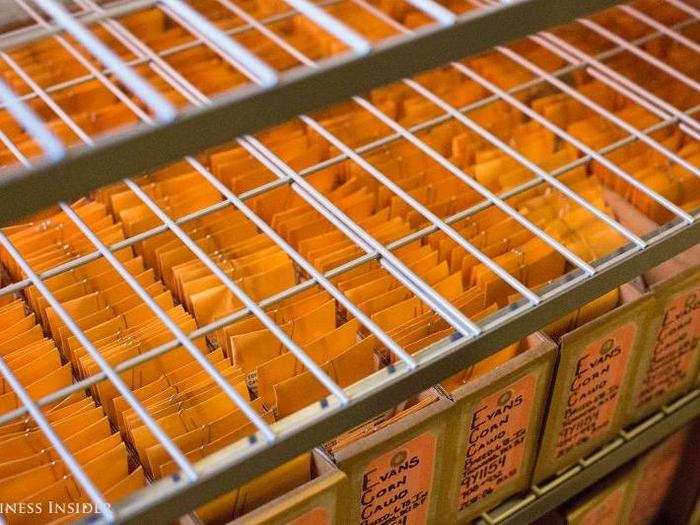
The company's breeding efforts are both reactive and proactive. They make crops more resistant to disease, but also create new types produce with desirable traits.
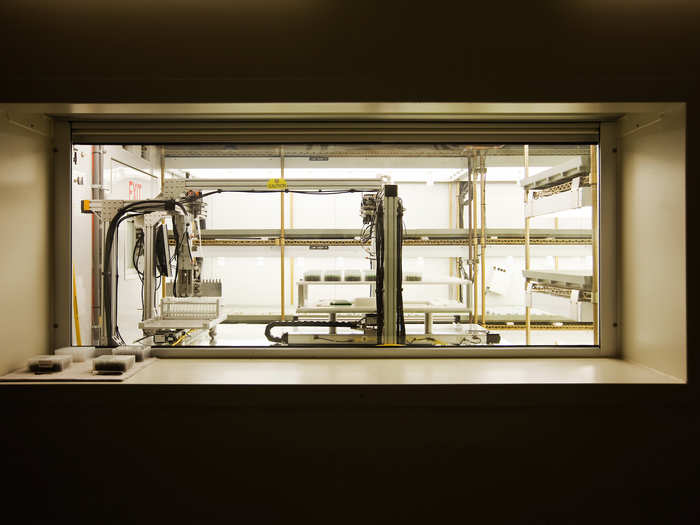
In 2011, Monsanto gave broccoli an upgrade. Beneforté combines a wild broccoli variety that produces antioxidants in abundance with commercial broccoli to create a nutrient-rich hybrid.
Monsanto has also engineered a non-GMO onion that doesn't make you cry, called the EverMild; a lettuce that crunches long after you bring it home from the store (the Frescada); and a bell pepper reduced to a single-serving size (the BellaFina).
The company's first challenge in making a sweeter winter cantaloupe, for example, is figuring out which genes in the melon are responsible for brix, a measure of sweetness.
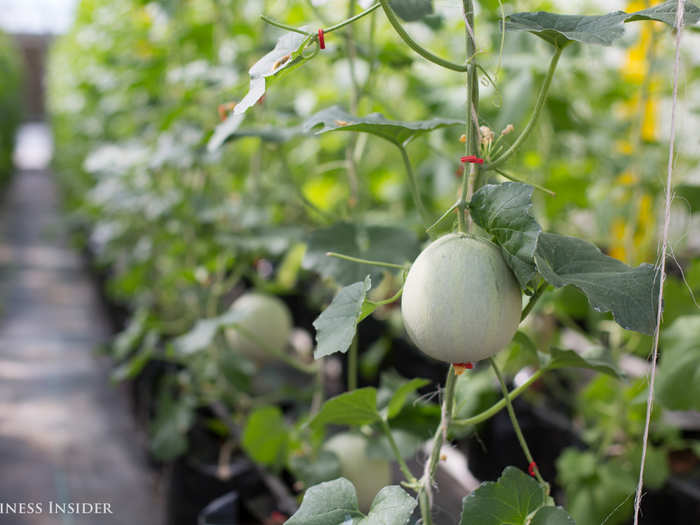
Source: Wired
In order to achieve this, Monsanto takes the seeds of one melon variety believed to taste sweeter and the seeds of another melon, thought to be less sweet, as a control.
A machine called a seed chipper, a proprietary Monsanto technology, shaves a small slice from each of the two melon seeds. It separates the shells with a blast of air.
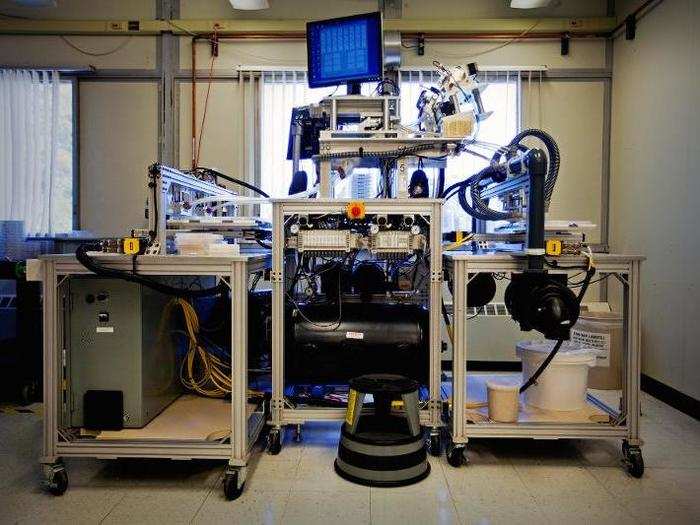
Source: Popular Science
The seed chips go into trays that contain small beads, which pulverize the material into a fine powder. Then the chips can be read by yet another machine for genome sequencing.
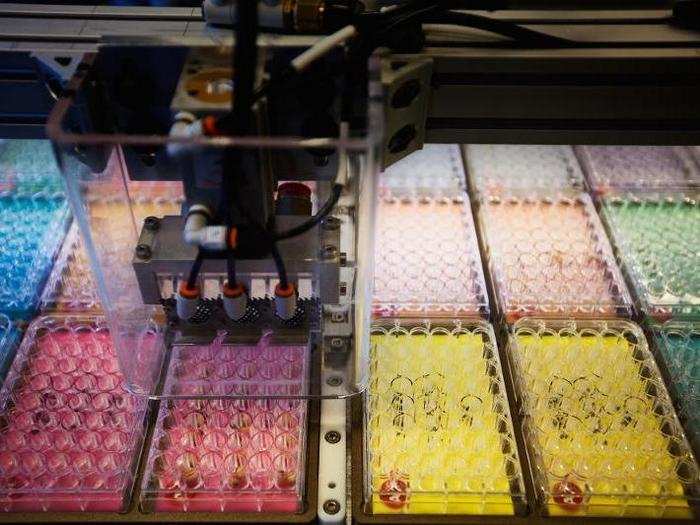
The crushed seed chips are transported by machines into tiny wells. A chemical dye that binds to the plant's DNA is added. The material changes color if it turns up the desired trait.
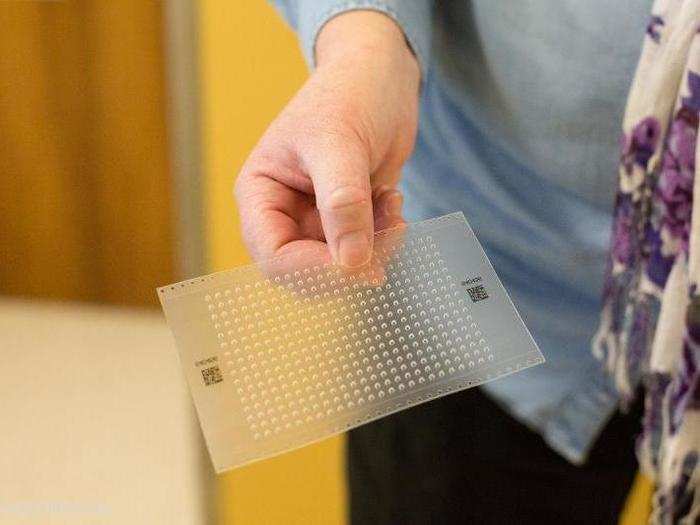
Once the trait (which in this example is sweetness) has been mapped in the plant's DNA, Monsanto sends a report of the data to one of 60 vegetable-breeder employees located around the world. They advance the experiment in real life.
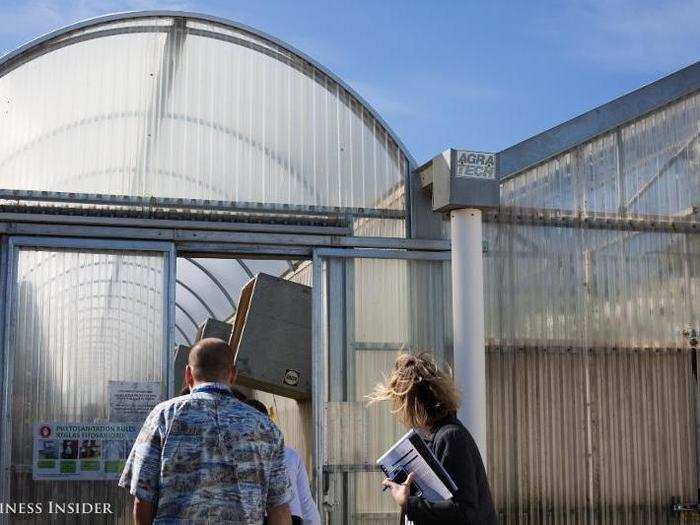
Jeff Mills, a melon breeder at Woodland, oversees a greenhouse of about 1,200 melon plants. He breeds them with other varieties containing seeds that are expected to produce specific traits based on genetic testing done in the lab.
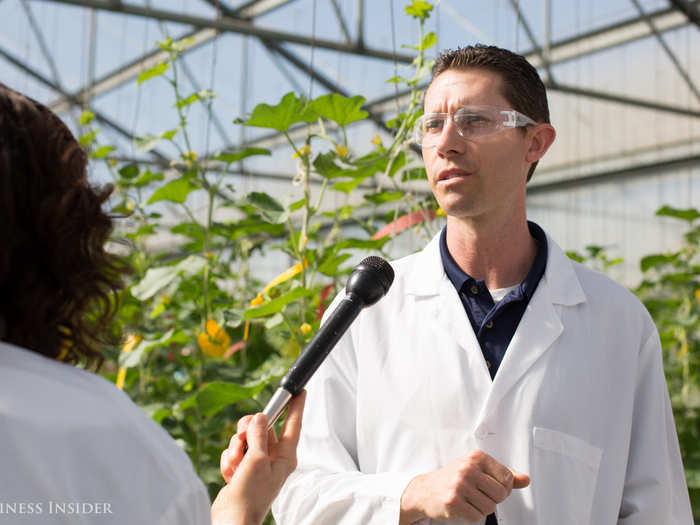
Mills says it takes about seven years to bring a new variety of melon from development to grocery aisles. Incremental changes are key. "There's no such thing as perfect," he says.
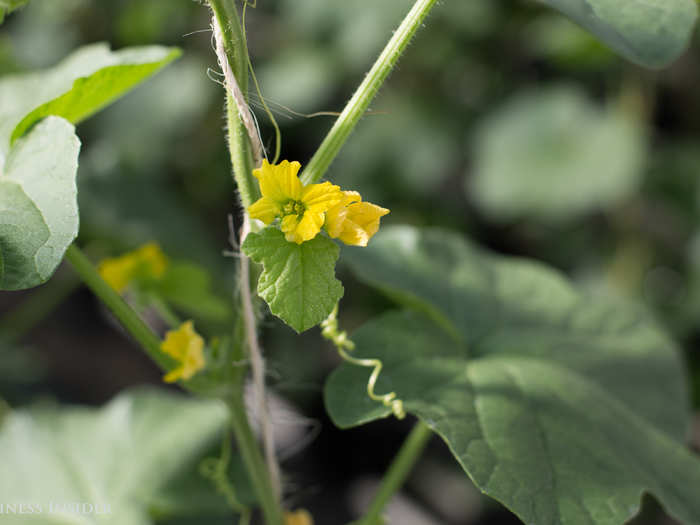
When a new variety approaches retail launch, it undergoes rigorous consumer testing. Chow-Ming Lee, consumer sensory lead at Monsanto, oversees dozens of taste tests in the US and Europe every year. He gathers 100 to 150 consumers each time.
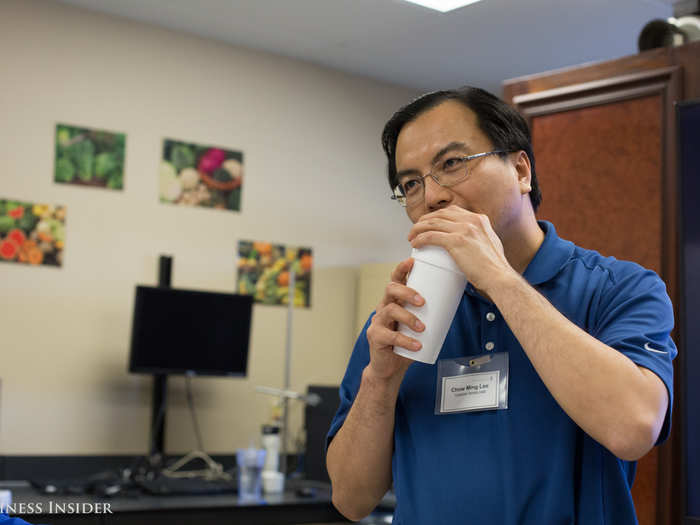
A typical taste-test tray includes several sample cups containing bite-sized pieces of vegetables, a bottled water, a "spit cup," and a clicker for submitting a rating per sample.
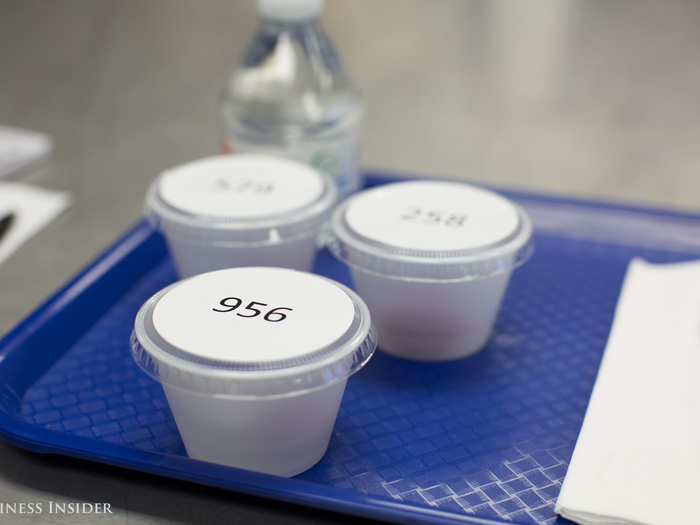
During a demonstration, Lee found that a sugary grape tomato variety received a "six" from the group. (I voted six because it was tasty, but not so good that I wanted seconds.)
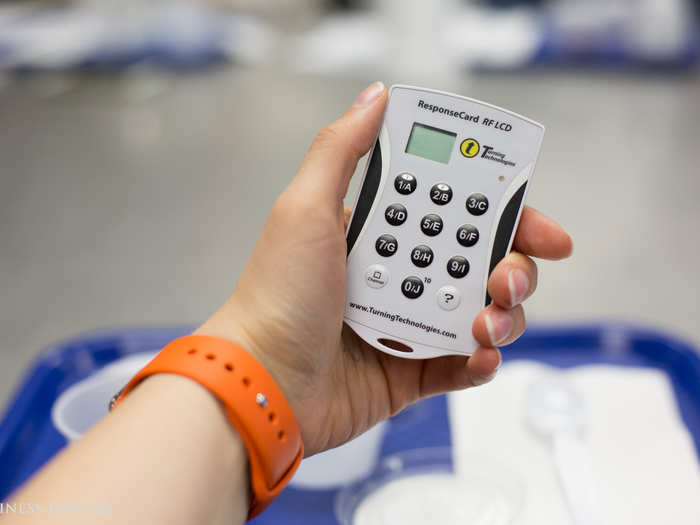
A six sounds modest, but Lee says that's a great score for a tomato. "It's not chocolate," he says.
While Monsanto pursues innovative work at Woodland, critics worry about its hold on the vegetable seed industry
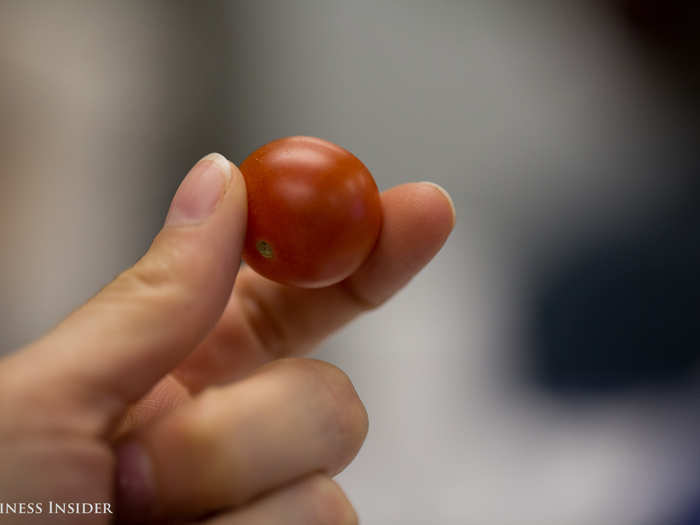
If Monsanto loses interest in certain seed varieties, they may virtually disappear.
In 2000, Seminis bought several smaller seed suppliers and dropped more than 2,000 hybrids from production. The majority of these varieties were proprietary, so they ceased to exist.
Critics worry that too few players hold the power in the vegetable seed industry in general. That could threaten biodiversity, hurt small-time breeders, and sap the market of competition.
But with its free-flowing capital, talent, and hold on the seed business, Monsanto has the power to change the way we eat.
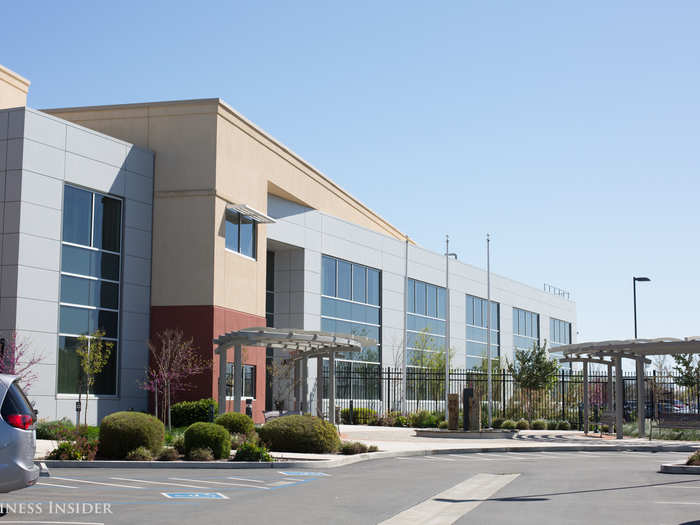
Advertisement